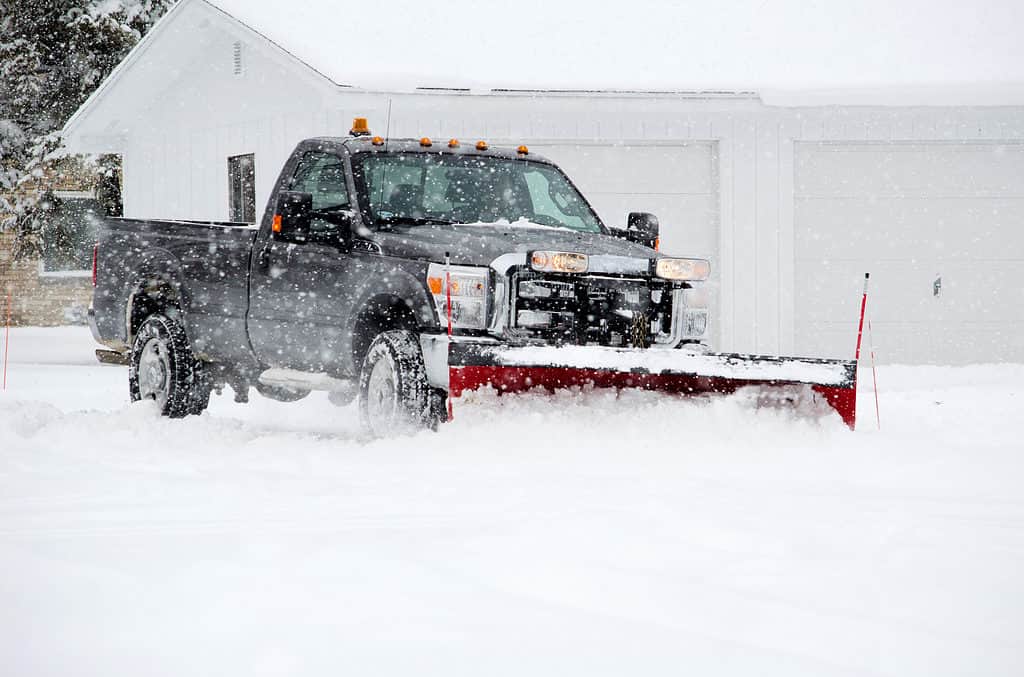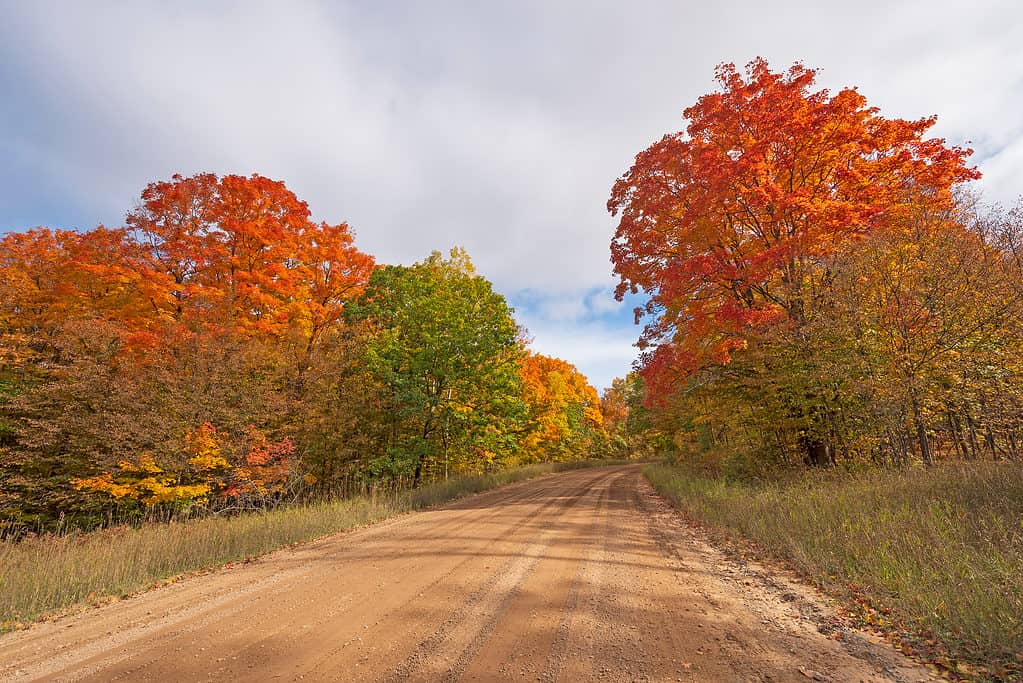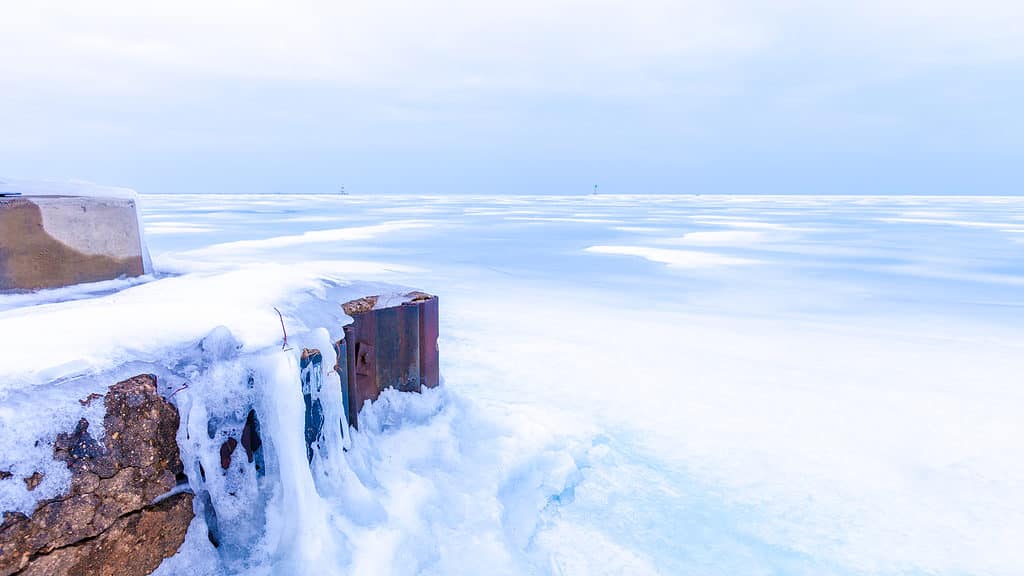
Michigan is an excellent place for outdoor enthusiasts looking to enjoy the natural beauty that it has to offer. From its vast lakes and rivers to its rolling hills and lush forests, the state of Michigan provides a variety of outdoor activities for everyone to enjoy. But like other states in the American mid-west, Michigan is also home to some exceptionally frigid weather, and the coldest place in Michigan is no exception.
The Coldest Place in Michigan (-51°!)
The town of Vanderbilt, located in the northern part of Michigan, holds the record for the coldest temperature ever recorded in Michigan, at -51°F on February 9, 1934.
Vanderbilt, Michigan, is a small town located in the northern part of the state. On February 9, 1934, temperatures dropped to a record low of -51°F. This temperature remains the coldest ever recorded in Michigan to this day. The cold front lasted for several days before finally subsiding and leaving behind huge amounts of snowfall covering everything in sight. Residents were forced to stay indoors as they experienced one of the harshest winter storms that had ever been seen in their area.

During the biggest blizzard in Michigan history, snow drifts covered single-story houses.
©Susan B. Sheldon/Shutterstock.com
The Biggest Blizzard in Michigan History
On Thursday, January 26, 1978, the most severe and expansive blizzard in Michigan’s history commenced, lasting into the morning of Friday, January 27. Areas of the state got up to 33.8 inches of snow over four days, with Muskegon, Michigan, receiving the most snowfall. Winds blew at a maximum speed of 111 miles per hour, causing snowdrifts that almost buried some homes. The wind chill made temperatures feel as low as -60°F.
The blizzard that struck Michigan had a devastating effect, as 20 people passed away due to heart attacks, car accidents, and even exposure. More than 100,000 vehicles were left on the roads throughout the state, particularly in the southeast. Many individuals were taken to hospitals for being exposed to the cold since their homes had no power or heat.
History of Vanderbilt

The coldest temperature ever recorded in Michigan was in Vanderbilt, when it was -51°F in February of 1934.
©Wildnerdpix/Shutterstock.com
Vanderbilt is located in the heart of Michigan’s Lower Peninsula amidst rolling hills and thick forests. It’s known for its small-town charm and friendly residents, who welcome visitors with open arms.
Vanderbilt is a small village located in Otsego County and was founded in 1875. It is 10 miles south of Gaylord and was founded by James Vanderbilt and named in honor of his father, the famous Cornelius Vanderbilt. Cornelius Vanderbilt was one of the wealthiest Americans in history, famous for building a railroad empire and the namesake of Vanderbilt University.
Vanderbilt, Michigan, was founded as a railroad town, and the Chicago and West Michigan Railway had its tracks running through the area. It was an important connection between the cities of Detroit and Grand Rapids.
Today, the area is renowned for its natural beauty, with plenty of trails, fishing spots, hunting grounds, and camping areas. While the village has a few amenities, it mainly focuses on outdoor activities.
Northern Michigan, where Vanderbilt is located, is a historically cold region, with temperatures regularly below -20°F.
Fun Facts about Vanderbilt
- Vanderbilt holds the record for the coldest temperature ever recorded in Michigan.
- Vanderbilt has a high-temperature fluctuation throughout the year, with hot summers and cold winters. The record high in the town is 108°F, and the record low is -51°F.
- The village is located on the 45th parallel, which is halfway between the equator and the North Pole.

Average temperatures in Michigan are between 25°F and -7°F during the winter.
©iStock.com/LaVonna Moore
Average Temperatures
Due to its location in northern Michigan and its proximity to Lake Michigan, Vanderbilt’s climate is greatly affected by the Great Lake. During the winter months, temperatures can plunge to extreme lows.
In a usual winter, Vanderbilt experiences an average high temperature of 25°F and an average low of -7°F. The coldest temperatures are typically experienced during December, January, and February when temperatures can dip to -25°F or below. However, there have even been days when the temperature has dropped below -50°F. The coldest temperature ever recorded in Vanderbilt was -51°F on February 9, 1934!
Snow in Vanderbilt
Vanderbilt and the surrounding area receive an average of 74 inches of snowfall each year. This is due to the Lake Effect snow from Lake Michigan and the surrounding areas. Lake Effect snow refers to the unique weather pattern that occurs in the Great Lakes region when cold air originating in Canada travels over the warmer lakes and creates large snow storms.
The snowfall can range from light dustings to extreme blizzards, with heavy snowfall expected during the winter months.
Winter vs. Summer in Vanderbilt
The summers in Vanderbilt can be surprisingly hot, with temperatures averaging around 83°F in July and August. The heat is usually accompanied by high humidity levels. Despite the high temperatures, Vanderbilt is still an ideal destination for outdoor activities, such as hiking in the surrounding woods or swimming in one of the nearby lakes.
The area around Vanderbilt is a winter wonderland, with Lake Charlevoix and its surrounding snow-covered hills providing a beautiful backdrop for outdoor activities like skiing, sledding, and snowshoeing. But make sure to bundle up if you plan on visiting Vanderbilt in the winter – it’s not for the faint of heart!
But don’t worry — there’s plenty to do at Vanderbilt all year round. After the snow melts, visitors can explore the area’s rural farms, hiking trails, and pristine lakes. The nearby Sturgeon River is perfect for canoeing or kayaking, and the scenic vistas are great for photography.

Michigan is known for hot, humid summers and winters with freezing temperatures.
©Moab Republic/Shutterstock.com
Population
Vanderbilt is located in the northern part of Michigan and covers about 1.2 square miles. The population of Vanderbilt is around 500 people, with the majority being of European descent. There is also a small minority population comprised of Asian, Native American, African American, and Hispanic individuals.
The population density of Vanderbilt is about 456 people per square mile. This is relatively low compared to other parts of the state, making Vanderbilt a quiet and peaceful place to live. While many people live in the area year-round, it is also a popular destination for tourists and outdoor enthusiasts looking to experience the natural beauty of northern Michigan.
Historical Population Growth
Since the founding of Vanderbilt in 1875, the population has remained relatively steady and is currently around 500 people. The population peaked in 1990 when it had over 600 residents. Over time, Vanderbilt’s population has slowly declined due to the decline of the railroad industry and the outmigration of individuals to larger cities.
Despite its small population, Vanderbilt is home to a vibrant community of locals who are passionate about their hometown. The people of Vanderbilt take pride in the area’s natural beauty and enjoy spending time outdoors, enjoying the fresh air.
Wildlife in Vanderbilt

Vanderbilt is the home of much wildlife, including red foxes.
©iStock.com/The_Near_North
The surrounding areas of Vanderbilt are home to an abundance of wildlife. Red foxes, coyotes, deer, and all sorts of birds can be found in the area. The nearby lakes are also home to various fish, such as bass, bluegill, and walleye.
The area is also home to many black bears. These bears are often seen roaming through the woods, and it is not uncommon to spot them near the village. The northern lower peninsula has a black bear population of nearly 3,000, which is quite a significant number. However, during the coldest winter months, these bears remain inactive inside dens in a semi-hibernation state.
Vanderbilt is also home to several species of small mammals and reptiles, such as squirrels, skunks, and snakes. Despite the cold temperatures, there is still an abundance of wildlife in Vanderbilt and the surrounding areas.
From its extremely cold temperatures to its abundant wildlife, Vanderbilt is a unique place to be. With its small population, it is the perfect spot for those looking for a peaceful and tranquil place to live. There are plenty of outdoor activities to enjoy year-round, making it an excellent destination for tourists and residents alike.
Whether you’re looking to take in its natural beauty or just relax in a quiet setting, Vanderbilt has something for everyone. But throw on some layers and a warm jacket if you want to explore this winter wonderland – the cold can be unforgiving!
The photo featured at the top of this post is © Amanda Oldham/Shutterstock.com
Sources
- M Live, Available here: https://www.mlive.com/weather/2020/02/michigans-coldest-and-hottest-temps-not-where-youd-expect.html
- M Live, Available here: https://www.mlive.com/weather/2021/07/michigan-has-coldest-temperatures-in-the-us-right-now.html
Thank you for reading! Have some feedback for us? Contact the AZ Animals editorial team.






